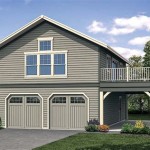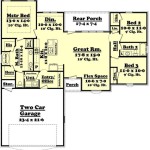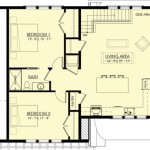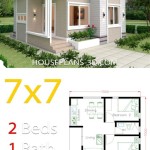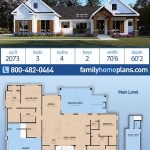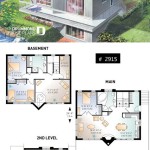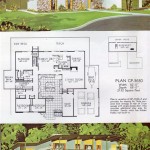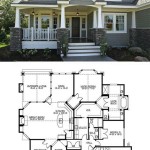Tiny House Plans: Maximizing Space with Three Bedrooms
The concept of tiny house living has gained significant traction in recent years, driven by factors like affordability, environmental consciousness, and a desire for simplified living. While the minimalist aesthetic and reduced footprint are appealing, one common concern arises: accommodating families, especially those requiring multiple bedrooms. This article explores the possibility of constructing tiny houses with three bedrooms, examining the challenges and innovative solutions involved.
Designing a tiny house with three bedrooms necessitates a careful balance between minimizing square footage and maximizing functionality. The success of such a project relies heavily on strategic planning, creative space utilization, and an understanding of building codes and regulations. It's crucial to approach the design process with realistic expectations, acknowledging that compromises may be necessary to achieve the desired bedroom count within a limited space.
Challenges in Designing Three-Bedroom Tiny Houses
The primary challenge in designing a three-bedroom tiny house is the limited square footage. Traditional houses offer ample space for individual bedrooms, but tiny houses require innovative approaches to fit the same functionality into a fraction of the area. Meeting building codes, ensuring adequate natural light and ventilation for each bedroom, and providing sufficient storage space are other significant hurdles.
Accessibility can also be a concern, particularly in multi-story tiny houses. Staircases or ladders, while space-saving, may not be suitable for individuals with mobility issues. Furthermore, privacy can be compromised when bedrooms are situated in close proximity to each other. Careful consideration must be given to sound insulation and layout to minimize disturbances.
Another challenge lies in sourcing appropriate appliances and furniture. Standard-sized appliances and furniture are often too large for tiny houses, necessitating the use of compact or multi-functional alternatives. Finding appliances that meet energy efficiency standards while fitting within the available space can be a complex undertaking.
Strategies for Maximizing Space
Several strategies can be employed to maximize space in a three-bedroom tiny house. Lofting is perhaps the most common technique, creating vertical space for bedrooms or storage. Lofted bedrooms typically involve a ladder or staircase for access, allowing the ground floor to be used for living areas and other essential functions.
Multi-functional furniture is another crucial element of tiny house design. Convertible sofas, foldable tables, and storage beds can serve multiple purposes, reducing the need for separate pieces of furniture. Built-in storage solutions, such as shelves and drawers integrated into walls or under stairs, can also significantly increase storage capacity.
Open-plan living areas can create a sense of spaciousness, even in a small footprint. By combining the living room, dining area, and kitchen into a single open space, designers can avoid the need for dividing walls, making the house feel larger and more airy. Careful placement of windows and doors can further enhance the feeling of openness and bring in natural light.
Another strategy involves utilizing outdoor space as an extension of the living area. Decks, patios, and porches can provide additional space for relaxing, dining, or entertaining, effectively increasing the usable living area of the tiny house. Outdoor storage solutions, such as sheds or storage benches, can also help to declutter the interior and free up space.
Key Design Considerations for Three-Bedroom Tiny House Plans
When designing a three-bedroom tiny house, several key considerations should guide the planning process. The number of occupants and their specific needs should be taken into account. For example, a family with young children will require different design features than a group of adults sharing the space.
Privacy is another important factor. Bedrooms should be positioned to minimize noise and visual disturbances. Sound insulation materials can be used in walls and floors to reduce noise transmission between bedrooms. Consideration should be given to the placement of windows and doors to ensure privacy while still allowing for natural light and ventilation.
Accessibility is also crucial, especially for individuals with mobility limitations. Ramps or elevators may be necessary to access lofted bedrooms. Wider doorways and hallways can improve maneuverability for wheelchair users. Grab bars and other safety features should be incorporated into bathrooms and other potentially hazardous areas.
Building codes and regulations must be adhered to throughout the design and construction process. Zoning laws may restrict the size and placement of tiny houses. Building codes typically specify minimum room sizes, ceiling heights, and window sizes. It is essential to consult with local authorities and obtain the necessary permits before starting construction.
Energy efficiency is another important consideration. Proper insulation, energy-efficient windows and doors, and energy-efficient appliances can significantly reduce energy consumption and lower utility bills. Renewable energy sources, such as solar panels, can further reduce the environmental impact of the tiny house.
Natural light and ventilation are essential for creating a healthy and comfortable living environment. Large windows and skylights can bring in natural light, reducing the need for artificial lighting. Cross-ventilation can be achieved by strategically placing windows and doors to allow for airflow throughout the house. Proper ventilation can also help to prevent moisture buildup and mold growth.
Storage is a critical aspect of tiny house design. Built-in storage solutions, such as shelves, drawers, and cabinets, can maximize storage capacity. Multi-functional furniture, such as storage beds and ottoman, can also provide additional storage space. Vertical storage, such as wall-mounted shelves and hanging organizers, can make use of otherwise unused space.
The overall aesthetic of the tiny house is also an important consideration. The design should reflect the personal style and preferences of the occupants. A cohesive design scheme can create a sense of harmony and spaciousness. Neutral colors, clean lines, and minimalist decor can help to create a feeling of openness and airiness.
The cost of construction is another significant factor. Tiny houses are typically more affordable than traditional houses, but the cost can vary depending on the size, materials, and finishes. It is essential to create a detailed budget and stick to it throughout the construction process. DIY construction can significantly reduce costs, but it requires significant time and effort.
Examples of Three-Bedroom Tiny House Plans
While not as common as one- or two-bedroom tiny houses, several examples of three-bedroom designs exist, showcasing the possibilities of maximizing space. Many of these designs utilize a combination of lofts and ground-floor bedrooms to achieve the desired bedroom count.
One common design involves a lofted master bedroom and two smaller ground-floor bedrooms. The ground-floor bedrooms are often designed as bunk rooms or multi-purpose spaces that can be used as bedrooms, offices, or playrooms. This design is particularly suitable for families with children.
Another design involves three lofted bedrooms, accessed by ladders or staircases. This design maximizes the use of vertical space, freeing up the ground floor for living areas and other essential functions. However, it may not be suitable for individuals with mobility issues.
Some designs incorporate a single ground-floor bedroom and two lofted bedrooms, providing a balance between accessibility and space maximization. The ground-floor bedroom can serve as a master bedroom or a guest room, while the lofted bedrooms can be used for children or other occupants.
The specific layout and features of a three-bedroom tiny house will depend on the individual needs and preferences of the occupants. However, all successful designs share a common focus on maximizing space, minimizing clutter, and creating a functional and comfortable living environment.
Ultimately, designing a tiny house with three bedrooms is a complex undertaking that requires careful planning, creative problem-solving, and a willingness to compromise. However, with the right approach, it is possible to create a small but functional home that meets the needs of a growing family while embracing the principles of tiny house living.

9 Best Tiny House 3 Bedroom Ideas Small Plans

Spacious Design Ideas For Three Bedroom Tiny Homes The Life

Small Home Plan With 3 Bedrooms Cool House Concepts

The Bungalow Plus Extra 3 Bedrooms 2 Bathrooms 1022 Sq Ft Tiny Home Steel Frame Building Kit Adu 1 Homes

3 Bedroom Tiny House Guide To Design Living United Homes

3 Bedroom Kauri Tiny Home On Wheels By House Builders Sleeps 6

New Tiny House Plans Blog Eplans Com

Pin Page

The Cau 3 Bedrooms 1225 Sq Ft Tiny Home Steel Frame Building Kit Adu Upgrade Options Avl Plus 1 Homes

9 5m X 10m 3 Bedroom House Plan Tiny Small Home Floor Cabin Modern Granny 1 Y With

